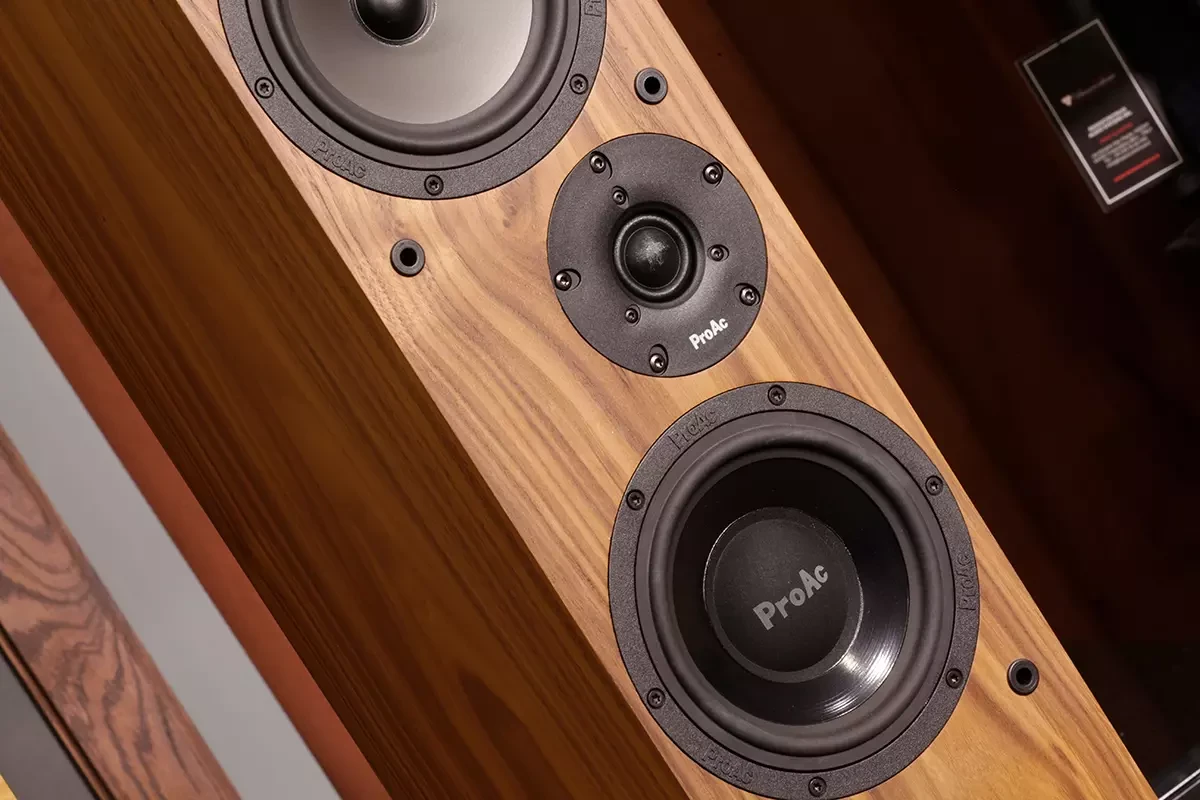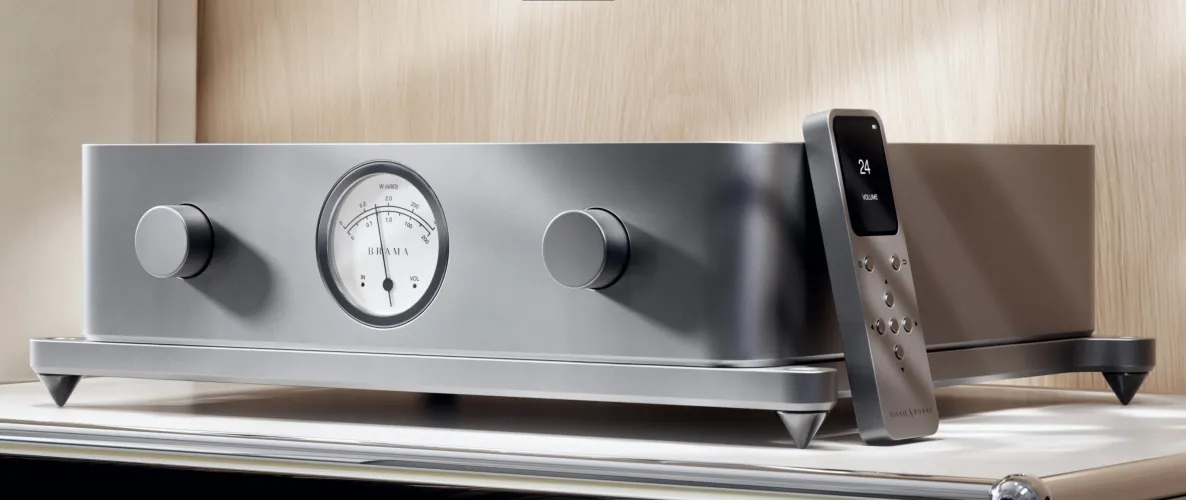
Review: ProAc Response DT8 loudspeakers – the kings of dynamics?
The successors of the legendary series turned out to be exceptionally successful
13.11.2024 09:30 | ~4 minutes read
The first loudspeakers of the ProAc Response series made a splash in the Hi-Fi market at the end of the 20th century – compact speakers provided incredible panchy bass and mind-blowing dynamics. Today, the legendary series of the British company is still in service – we review the new ProAc Response DT8 speakers, which inherit all the family features of past generations of Response-series. Will the acoustic systems be able to confirm the status of the company and demonstrate the same high competitiveness as before? Read our review of the ProAc Response DT8.


Appearance
Small footprint speakers will not take up much space in the room – one ProAc Response DT8 has dimensions of 978x193x229 mm, the cases seem well damped and devoid of resonances. Each speaker weighs 26 kg. As usual, the company pays a lot of attention to the finish, standard options include Black Ash, Mahogany, Cherry, Oak, Silk White and Walnut, with Rosewood and Ebony available for an extra charge. Depending on the solution, the price will be in the range of £2,825.00 to £3,635.00 – not so much as we expected from famous brand.


Design
ProAc Response DT8 uses a bass reflex design with a down-fired port (directed to the floor) - so, the placement of the speakers is possible even close to the walls of the hall, although for an optimal scene it is better to place the speakers at some distance from vertical surfaces. As usual for the company, the rated sensitivity of the speakers is quite high and is 90 dB, but the impedance is low (4 Ohms). Because of this approach, you need to provide a fairly powerful and stable amplification in pair with ProAc Response DT8, although the manufacturer states requirements from 20 to 180 watts, it is better to focus on the upper limit of this range. The frequency range is extremely wide for a cabinet of such a volume - 28Hz-30kHz.


Technology
ProAc Response DT8 incorporates these design parameters for the first time in a ProAc two-way design and uses 2 x 6.5-inch drivers as Bass/Midrange. One driver with Pagina Mica cone and open weave dust cap and one driver with Polypropylene cone with soft polypropylene dust cap work in tandem and are complemented by the proprietary ProAc 1” silk dome tweeter with an extended bandwidth of up to 30,000 Hz. This solution allows you to “hit several targets with one shot” - the pulp mica diffuser is responsible for clear and precise bass, and the polypropylene unit guarantees transparent and rich midrange frequencies. Since both drivers work in tandem, the depth of bass notes extends to 28 Hz, which is an extraordinary figure for a circuit with a pair of 6.5-inch drivers. The tweeter is mounted in an offset position between the two bass drivers.
The ProAc Response DT8 crossovers are based on a Stewart Tyler design and are divided into two types for bass/mid drivers. The glass fibre board crossovers use multistrand copper wire and allow the connection of speakers with both Bi-amping and Bi-wiring schemes.


Test system
When testing the ProAc Response DT8 speakers, we used a set of electronics from YBA, namely, a CD player – YBA Signature CD player, a preamplifier – YBA Signature Preamplifier and a power amplifier – YBA Signature Stereo Power Amplifier. Before listening, the speakers had a burn-in period of 100 hours – exactly how long it takes for the speaker suspensions to reach their basic characteristics.
Listening

We started listening to the Milt Jackson Sunflower jazz album and were amazed by the spatial picture that the speakers created. Lively and agile, the "mercury" sound canvas captured your attention and did not let go - you wanted to enjoy the richness of musical textures and float after the smooth rhythms of the performer.

The transition to the magical guitar riffs of Stevie Ray Vaughan Texas Flood demonstrated both a dense, punchy bass and excellent elaboration of both the midrange and high-frequency range. The acoustics' overload capacity turned out to be very high - even in a 35 m2 room there was no hint that the speakers could choke. At the same time, the speakers successfully separated sound images in space and never allowed them to become mushy.

Finally, the classic Ravel Boléro by Berliner Philharmoniker and Pierre Boulez, a stress test for this price group. It cannot be said that we heard the ideal – the most complex attack of the final minutes of the saga seems to be an impossible task even for speakers three times more expensive. Nevertheless, ProAc Response DT8 were able to convey to us the spirit and feelings of the original idea, always retained a natural timbre picture and approached the formation of microdynamic nuances extremely delicately.


Conclusion
ProAc Response DT8 can boast of a very precise and balanced sound, clearly going beyond the price range in terms of quality, in which these acoustic systems are presented. These loudspeakers are amazing - it's hard to find an audiophile who would complain after listening to them. Expressive dynamics, which the ProAc Response DT8 show, seems to be completely magical – you can fall in love with such a presentation at first sight. The frequency range of ProAc Response DT8 does not cause any complaints – from punchy bass to transparent midrange frequencies, or sparkling high frequencies, the entire spectrum looks really great.

Evaluations
Stage
95%
Detailing
92%
Macrodynamics
95%
Microdynamics
93%
Bass extension
93%
Timbral authenticity
90%
Genre versatility
90%
Overall
92%
Specifications
This product is in the Hi-Fi and High End Electronics and Acoustics database
Floorstanding loudspeakers — ProAc Response DT8
Model name
Response DT8
Frequency Response low +/- 3dB (Hz)
28
Frequency Response high +/- 3dB (Hz)
30000
Sensitivity (dB at 1 W/1m)
90
Impedance (Ohms)
4
Power amplifier requirements (W)
20 - 180
Has internal amplification
N/A
Internal amplification power (W)
N/A
Size (sm)
978 x 193 x 229
Weight (kg)
28
Official link
Particular qualities
2 x 6.5-inch drivers as Bass/Midrange, both drivers work in tandem
The depth of bass notes extends to 28 Hz
Bass reflex design with a down-fired port
1” silk dome tweeter with an extended bandwidth of up to 30,000 Hz.
Spitted crossovers based on a Stewart Tyler design with glass fibre board







